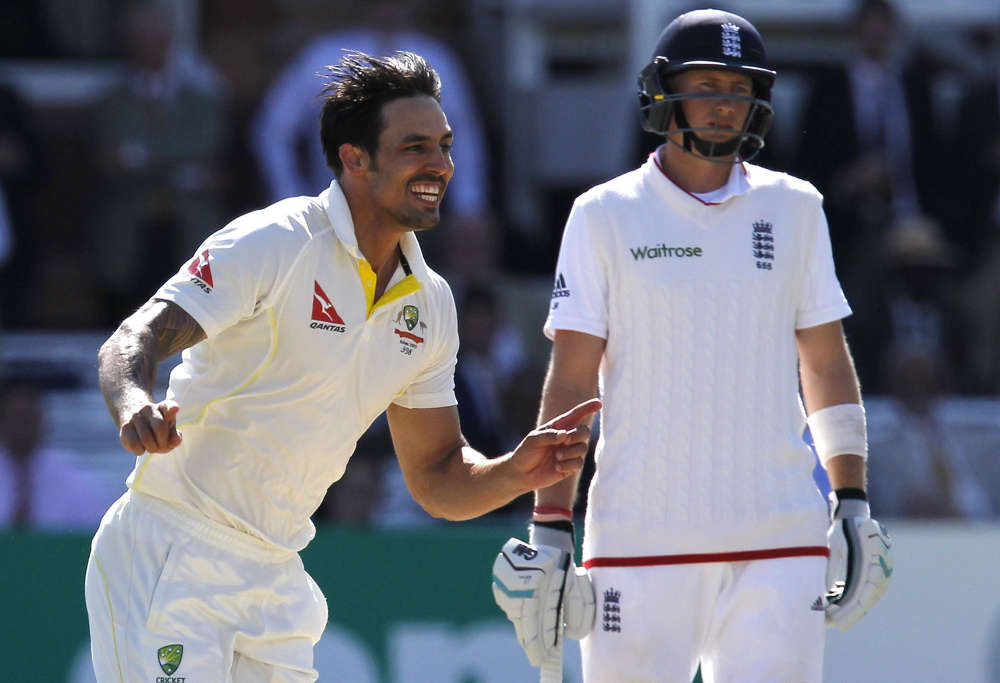Peter Siddle looks set to vault into Australia’s starting XI for the first Test against Pakistan next month. It would be an odd situation given his lack of penetration on flat pitches in recent years.
After an almost two-year absence from Tests, Siddle was included in the bizarre 15-man squad for the two-Test series in the UAE, alongside pace bolters Brendan Doggett and Michael Neser.
It seems unlikely the selectors would retrieve the veteran from the cricketing wilderness only to ask him to warm the bench, so I think he and Mitchell Starc will be Australia’s two seamers for the first Test.
While pencilling in Siddle for next year’s Ashes would make sense, given his effectiveness on seaming pitches, I cannot understand the logic behind picking him to play on what are expected to be roads in the UAE.
At his peak, six or seven years ago, Siddle was penetrative on all surfaces due to his combination of accuracy, stamina and pace, capable of hitting 150kmh.
He remains precise and tireless but now operates at a very gentle pace typically in the 125-130kmh range. As a result, he has only remained consistently effective on pitches which offer seam movement, like those in England.
Siddle has run amok in county cricket this season, grabbing 37 wickets at 16 for Essex in Division One. Accurate medium pacers like Siddle dominate in county cricket thanks to the seaming pitches and the swinging Dukes ball.
But those same types of bowlers typically struggle badly in Australia and Asia where the pitches are far less responsive and the Kookaburra and SG balls offer much less movement.
England, for example, have found time and again that many of their seamers who are world beaters in friendly home conditions are impotent in Asia and Australia.
It’s not that those particular English seamers are thrashed mercilessly away from home – often they remain reasonably economical but badly lack penetration without the swing and seam on offer at home.
Siddle, I sense, will be similarly exposed as a benign option in the UAE. History suggests as much. Consider that the last time Siddle played in the UAE – four years ago when he was 10kmh faster – he took two wickets from 83 overs, at an astronomical strike rate of 249.
That was indicative of Siddle’s big decrease in potency since he had a rapid loss in pace around 2013. Since the start of 2013, Siddle has played 20 Tests outside of England – the country which suits his bowling the most – and taken just 50 wickets in those matches at a lofty strike rate of 75.
It is not just in Test cricket that Siddle’s major decline in penetration has been apparent.
In the last Shield season, Siddle played nine matches and took just 24 wickets at a strike rate of 80. To get a sense of how inflated Siddle’s strike rate was consider that, among the other top 20 wicket takers in the Shield, the average strike rate was just 50.
While Siddle was striking at 80, his Shield teammate Chris Tremain was striking at 41. That massive gap in their penetration levels is, in a large part, due to Tremain having that extra 10kmh of pace which is so important on flat pitches.
And it is just such pitches on which Australia will play Pakistan – the UAE’s decks historically have been every bit as lifeless as the pancakes served up for Australian home Tests in recent years.
On their last tour of the UAE, Australia’s fastest bowler, Mitchell Johnson, was easily their most impactful quick while Siddle was frugal but never looked like taking a wicket.
The ability to tie up an end apparently is what convinced the Australian selectors to go back to Siddle for this Test series. But that job – drying up runs – is one well suited to Australia’s spinners in the UAE, there is no need for it to be performed by a frontline quick.

Mitchell Johnson: one of the highlights of the last three years. (AFP, Ian Kington)
Number one spinner Nathan Lyon was extremely economical in Australia’s six Tests in Asia last year, conceding just 2.64 runs per over.
Ashton Agar, meanwhile, has given up a miserly 2.81 runs per over in his brief Test career, and fellow left arm spinner Jon Holland has a career economy rate of 3.04 in first-class cricket.
It is two out of those three spinners who should be used to bowl long spells and dry up one end, not Australia’s quicks.
With Australia also expected to have fifth and sixth bowling options in Mitch Marsh and Travis Head, they could afford to pick two quicks who are genuine strike bowlers, instead of an economy-first medium pacer like Siddle.
Tremain was the obvious choice thanks to his 193cm frame, ability to swing the new and old ball and 140kmh-plus pace.
Instead Australia went with Siddle, short and skiddy swing bowler Michael Neser, and out-of-left-field enforcer Brendan Doggett. The latter bowler, with his sharp bounce and intimidating bouncer, could be an asset on lifeless decks in the years to come but is still far too green for Test cricket.
Neser is coming off a great Shield season, with 39 wickets at 22, but it should be noted that in his previous six Shield seasons his bowling averages were: 37, 44, 33, 38, 35, 58.
In any case, I don’t expect either Neser or Doggett to feature in the first Test if both Starc and Siddle are fit. I sense the Victorian veteran has been included in this squad to play, not just as a net bowler.





























































































